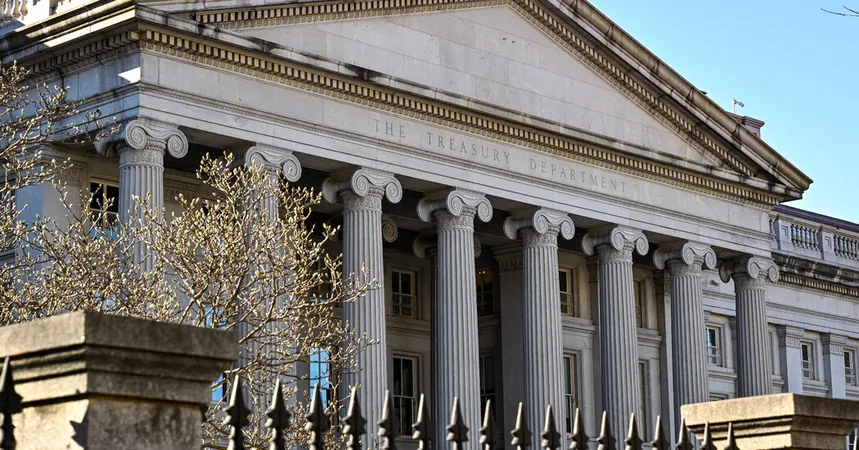
Alarming Revelations: U.S. Raises Red Flags on China's Lending Practices!
2024-10-01
In a striking statement, the United States is escalating its concerns regarding China's lending practices, specifically its emergency loans to countries plagued by debt. The lack of transparency surrounding these loans has prompted warnings that they may obscure the economic troubles facing fragile nations seeking financial assistance.
Brent Neiman, a senior official from the U.S. Treasury, emphasized the issue during a recent speech, calling on the International Monetary Fund (IMF) to challenge China for clearer lending terms. Neiman's remarks came after direct discussions between U.S. and Chinese officials earlier this year, reflecting heightened scrutiny in the wake of growing global economic challenges.
The Mechanics of Chinese Lending
China's financial assistance to indebted countries primarily flows through its central bank using currency swap agreements. These arrangements enable nations to borrow Chinese renminbi, which they can hold in their reserves while repaying foreign debts with their U.S. dollar reserves. Essentially, this system functions as a line of credit where the borrowing nation agrees to high interest rates in exchange for crucial liquidity.
With more than $200 billion in emergency lending reported over recent years, China currently has 31 active swap agreements worth a staggering $586 billion, according to state media releases. However, these loans often come with higher interest rates compared to those provided by the IMF or the U.S. Federal Reserve, raising concerns about the sustainability of such financing.
Hidden Liabilities and Debt Concerns
One of the most problematic aspects of these arrangements is that they often do not appear on the borrowing nation's balance sheet, obscuring the full extent of its liabilities. This lack of transparency poses significant challenges for both investors and international financial institutions, complicating assessments of a country's fiscal health. Countries like Laos, Suriname, and Argentina have been put under the microscope as the IMF struggles to determine their economic viability due to the opaqueness of Chinese currency loans.
In his speech, Neiman remarked on the challenges posed by insufficient reporting from the People’s Bank of China (PBOC), which complicates international efforts to gauge the full fiscal impact of these loans. He highlighted the urgent need for transparent financial flows and debt relief for countries implementing reforms, warning against potentially harmful lending practices.
Inflation and Rising Debt: A Recipe for Disaster?
The situation is compounded by criticisms that China's financial involvement in poorer nations ties them into inefficient debt cycles, as seen with its Belt and Road Initiative, which has exceeded nearly $1 trillion in construction-related lending. Despite increasing pressure from international policymakers for China to restructure these debts, progress has been painfully slow.
Former IMF China division director Eswar Prasad commented that the U.S. scrutiny on Chinese lending reflects broader frustrations with China's economic policies, including its management of exchange rates and financial support for state-owned and private enterprises. “This illustrates the U.S.'s toughening stance on various issues with China, particularly economic ones,” Prasad noted.
Conclusion: A Tipping Point in Global Finance?
The escalating concern over China's lending practices raises critical questions about global economic stability. As indebted nations continue to seek financial support, the U.S. emphasis on transparency and responsible lending could redefine international financial relations. The stakes are high, and the world is watching—how will China respond to these mounting criticisms? The potential ramifications could reshape the dynamics of global finance for years to come.
Stay tuned as we continue to uncover more about this developing situation!



 Brasil (PT)
Brasil (PT)
 Canada (EN)
Canada (EN)
 Chile (ES)
Chile (ES)
 España (ES)
España (ES)
 France (FR)
France (FR)
 Hong Kong (EN)
Hong Kong (EN)
 Italia (IT)
Italia (IT)
 日本 (JA)
日本 (JA)
 Magyarország (HU)
Magyarország (HU)
 Norge (NO)
Norge (NO)
 Polska (PL)
Polska (PL)
 Schweiz (DE)
Schweiz (DE)
 Singapore (EN)
Singapore (EN)
 Sverige (SV)
Sverige (SV)
 Suomi (FI)
Suomi (FI)
 Türkiye (TR)
Türkiye (TR)